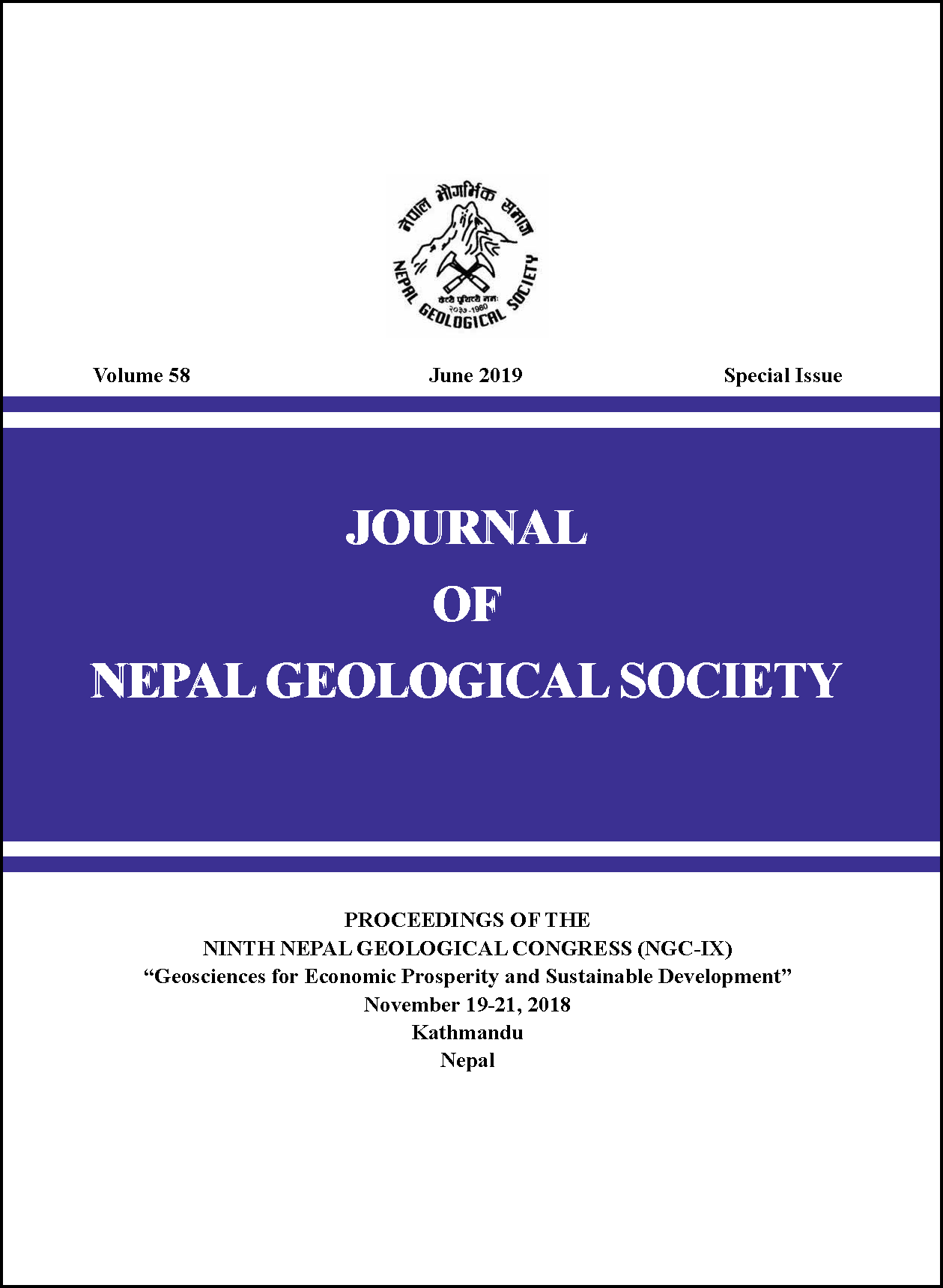Short Critical Note on Water Wealth of Nepal
DOI:
https://doi.org/10.3126/jngs.v58i0.24569Keywords:
Groundwater resource, Surface water, Terai Plain, Hydropower potential, Flood water managementAbstract
The message that Nepal is rich in water resources has been spread in Nepal since a long time. If one looks at the total quantum of water that flows out of Nepal in one year, the above message sounds valid but as the flow of water is not under anybody’s control and flow occurs under gravity as it precipitates or exits the water springs, it should be considered in two dimensions: volume and time. In my opinion, Nepal is water stressed most of the time of year: flood stressed during the monsoon and drought stressed during the rest of the year. Nepal is rich in ice-mass, which is depleting at an alarming rate due to global warming giving rise to formation and increase in volume of glacial lakes that increases the vulnerability and risks to the economic activities along the river basins. Similarly, Nepal is rich ing round water resource with the total annual replenish able reserve of about 12 BCM mostly located in the Terai plains. The most debatable is the surface water that mostly falls as rain during the monsoon and cascades down crossing into India, is often devastating, as it passes. Nepal’s water resource is generally related to its hydropower potential calculated as 83,000MW by Dr. Hari Man Shrestha back in the sixties. Hydropower potential is a number that is based on the energy potential and the market, therefore, it is changing from time to time due to change in demand pattern and the market rates. Myopic view of looking at the Himalayan waters relating it to energy production as the energy production (TAF-June 2018) comprises a meager percentage of total benefit which lies mostly on multiple use of water directed towards the following two aspects: (1)Reduction in the losses of life and property due to floods and unwanted mountain phenomenon, mostly flood related disaster risk reduction, and (2) Flood Water management for converting the curse of floods into assets by way of its multiple uses, both consumptive as well as non-consumptive including food revolution, navigation, fishery, water supply, replenishment of ground water, energy production and recreation.
Downloads
Downloads
Published
How to Cite
Issue
Section
License
© Nepal Geological Society




